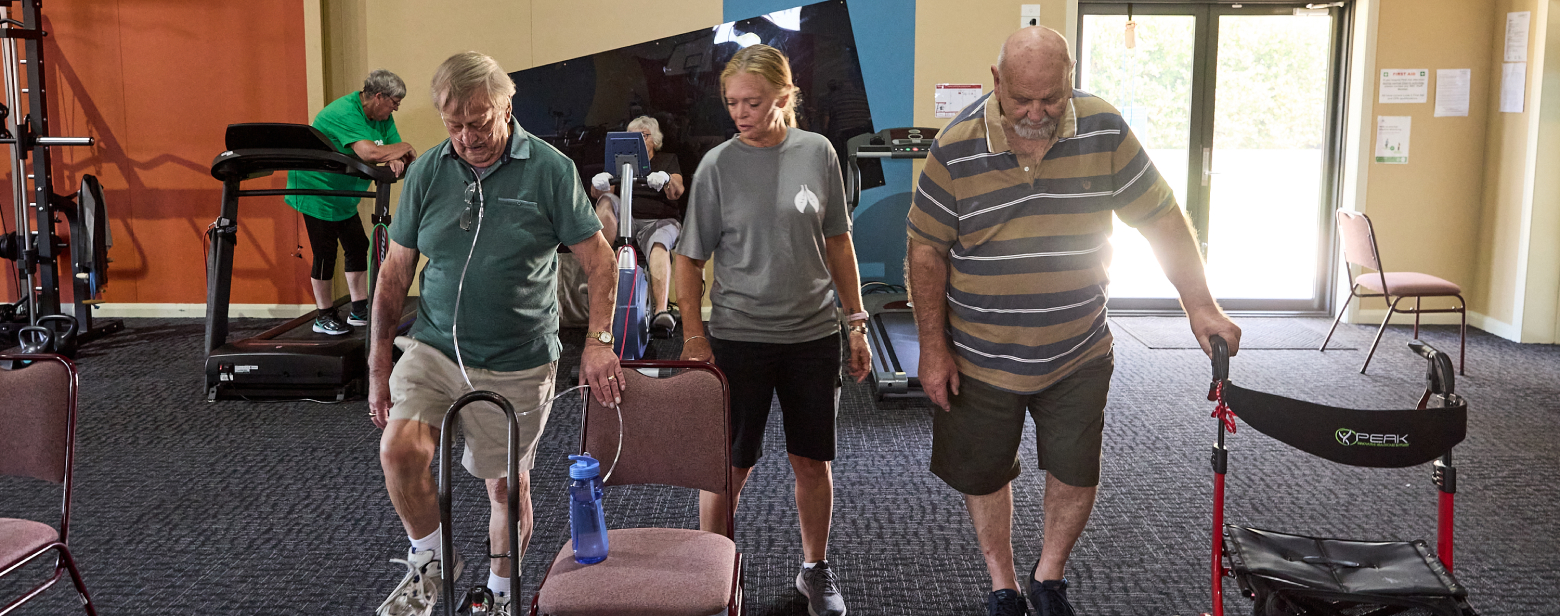Endurance - Lower Limb

Lower limb aerobic exercises (using large muscle mass):
- Walking training (over-ground or treadmill).
- Stationary cycling training if possible.
For patients with severe dyspnoea, fixing the shoulder girdle by using a wheeled walker (rollator) for walking training or leaning on to the handles when using a stationary cycle for cycle training allows:
- The accessory respiratory muscles to work more efficiently.
- This lean forward position may help to dome the diaphragm, improving its length/tension relationship.
Note: These two strategies may result in a slight reduction in ventilatory constraints to exercise, allowing a greater work level to be achieved by the lower limb muscles e.g quadriceps, gastrocnemius and gluteal muscles.
For patients who experience oxygen desaturation during exercise, the level of oxygen desaturation is often less during cycling, compared to walking. However, it should be remembered that to achieve the greatest changes in a functional activity such as walking, it may be better to train in walking.
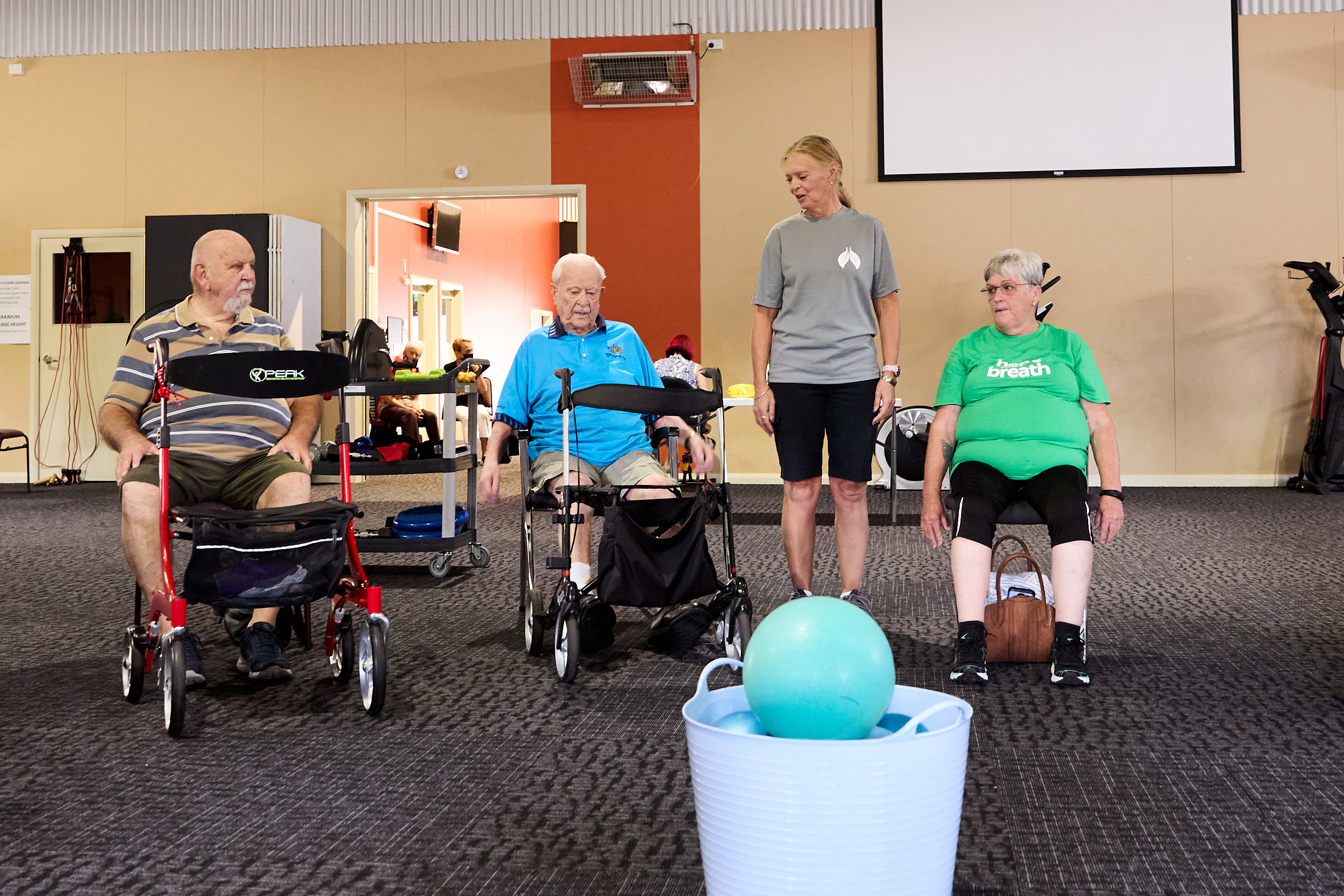
Downhill walking is associated with less symptoms of dyspnoea and fatigue than level walking and may be better tolerated by patients with severe dyspnoea, however potentially less tolerated by people with lower limb musculoskeletal and orthopaedic conditions.
Lower limb aerobic exercises performed in the water are an alternative option for patients with physical co-morbid conditions, such as orthopaedic or musculoskeletal conditions or obesity, which limit their ability to perform lower limb exercise training on land.3 Patients who have had recent surgery should check with a health professional before commencing water based activities to ensure any wounds have healed.
For people with bronchiectasis, lower limb endurance exercise may facilitate movement of secretions. Encouraging airway clearance via huffing, or the patient’s/individual’s usual airway clearance routine following this exercise may be necessary. Other individuals with bronchiectasis may benefit from completing their airway clearance techniques prior to endurance exercise and should be advised accordingly.
While the optimal endurance training strategy for patients with ILD still needs to be explored there is no evidence to suggest that the exercise prescription should vary from that provided to patients with COPD.
Walking training intensity: It is typically recommended that for walking training a starting intensity should be 80% of the average six-minute walk test (6MWT) speed (see below how to calculate walking intensity from the results of a 6MWT) or 70% of the peak speed achieved on the incremental shuttle walk test (ISWT) 6 7 (see below how to calculate walking intensity from the results of a ISWT). Functionally, if maximum walking speed is reached add an incline or hill to increase intensity.
Cycle training intensity: It is typically recommended that a starting intensity for cycle training should be 60% of peak cycle work rate. In many settings, the peak cycle work rate will not have been measured and exercise intensity may be titrated based on achieving a dyspnoea score or rate of perceived exertion score (RPE) of 3 to 4 on the modified BORG 0-10 scale.8

On This Page
> A. Prescribing intensity based on exercise test results
> B. Prescribing intensity based on dyspnoea assessments
> C. Prescribing exercise intensity for cycling based on 6MWT
A. Prescribing intensity based on exercise test results
The results of a 6MWT or an ISWT can be used to prescribe training intensity for a walking program (over-ground walking or walking on a treadmill) and a stationary cycle program. The calculations and examples for prescribing exercise intensity are provided below.
1. Exercise intensity for walking laps based on 6MWT
| To calculate an appropriate intensity for walking laps: 80% x ([6MWD ÷ 6] x prescribed duration) |
|---|
| Six-minute walk distance (6MWD) ÷ 6 = Distance in one minute |
| For distance in 30 minutes = one minute distance x 30 |
| For distance in 20 minutes = one minute distance x 20 |
| For distance in 10 minutes = one minute distance x 10 etc... The patient would not be expected to keep up the same walking pace throughout the walking training session that they achieved in the 6MWT. Therefore, prescribe 80% of the calculated distance by multiplying the prescribed duration distance by 0.8. |
Example:
If the patient walked 220 m in six minutes:
- One minute distance = 220 ÷ 6 = 36.7 m.
- 30 minute distance = 36.7 x 30 = 1100 m.
- 80% of 1100 = 880 m in 30 minutes.
If the distance of the over-ground walking track is known, this distance can be translated into a lap/track count. Patients may find it easier to count the number of laps they need to walk, rather than the number of metres.
As an example for a walking training intensity of 880 m in 30 minutes, if the walking track is 32 m then the patient needs to walk 27.5 laps in 30 minutes (i.e. 880 ÷ 32 = 27.5 laps, prescribe 27 or 28 laps).
Tip: Translate the prescribed walking distance into a format the patient is familiar with. For example, 28 times
up and down a corridor, or 2 laps of the oval field.
At the beginning of a program, patients (particularly those who have been sedentary) may not be able to walk continuously for 30 minutes. These patients should aim to start with 10 minutes of continuous walking, and build up to 30 minutes.
From the above example, if a 10-minute exercise session is deemed necessary at the start of the program, then this patient would need to walk 293 m (i.e. 880 m ÷ 3 = 293 m, rounded to 300 m).
2. Exercise intensity for walking on a treadmill based on 6MWT
| To calculate an appropriate intensity for walking on a treadmill: Treadmill speed = 80% x (6MWT average speed) |
|---|
| Treadmill speed = 80% x 6MWT average speed Treadmill speed= 0.8 x [(6MWD x10) ÷ 1000] = speed in km/hr Note: On a treadmill the patient should be supervised and the speed adjusted by setting a slower speed initially until the patient has mastered the walking technique. Once the patient is confident and safe walking on the treadmill, increase the speed accordingly to the calculated walking speed. |
3. Exercise intensity for walking laps based on ISWT
| ISWT Level |
Speed | Distance | Predicted VO2 Peak |
Time/ Shuttle |
Number Shuttles |
of | |
|---|---|---|---|---|---|---|---|
| m/s | km/hr | m | ml/kg/min* | secs | level | total | |
| 1 | 0.5 |
1.8 | 0-30 | 4.4-4.9 | 20 | 3 | 3 |
| 2 | 0.67 | 2.41 | 40-70 | 5.2-5.9 | 15 | 4 | 7 |
| 3 | 0.084 | 3.03 | 80-120 | 6.2-7.2 | 12 | 5 | 12 |
| 4 | 1.01 | 3.63 | 130-180 | 7.4-8.7 | 10 | 6 | 18 |
| 5 | 1.18 | 4.25 | 190-250 | 8.9-10.4 | 8.57 | 7 | 25 |
| 6 | 1.35 | 4.86 | 260-330 | 10.7-12.4 | 7.5 | 8 | 33 |
| 7 | 1.52 | 5.47 | 340-420 | 12.7-14.7 | 6.67 | 9 | 42 |
| 8 | 1.69 | 6.08 | 430-520 | 14.9-17.2 | 6 | 10 | 52 |
| 9 | 1.86 | 6.69 | 530-630 | 17.4-19.9 | 5.46 | 11 | 63 |
| 10 | 2.03 | 7.31 | 640-750 | 20.22-22.99 | 5 | 12 | 75 |
| 11 | 2.2 | 7.92 | 760-880 | 23.2-26.2 | 4.62 | 13 | 88 |
| 12 | 2.37 | 8.53 | 890-1020 | 26.4-30.2 | 4.29 | 14 | 102 |
*VO2peak (ml/kg/min) = 4.19 + (0.025 x distance {m})
Patients would not be expected to walk at the speed shown on the table during their endurance exercise training session. Therefore, only 75% of the peak speed should be prescribed as the walking speed (exercise intensity) for training. At 75% of peak speed, the patient will be walking at approximately 60% of their predicted peak VO2.
At the beginning of a program, patients (particularly those who have been sedentary) may not be able to walk continuously for 30 minutes. These patients should aim to start with 10 minutes of continuous walking, and build up to 30 minutes.
If the distance of the over-ground walking track is known, this distance can be translated into a lap/track count. Patients may find it easier to count the number of laps they need to walk, rather than the number of metres.
Example:
If the patient walked 190 to 250 m during the ISWT, then:
- The peak walking speed (as shown on the table) would be 4.25 km/hr (Level 5)
- The training walking speed would be 75% of the peak speed 75% of 4.25 km/hr = 3.2 km/hr
- Therefore, in one hour, the patient would be expected to walk 3.2 km
- For a 30 minute training walk, the patient would walk 1.6 km
- For a 20 minute training walk, the patient would walk approximately 1 km
- For a 10 minute training walk, the patient would walk approximately 0.5 km
- The distance can be converted to a number of laps. If the patient s walking track was 32 m, then the patient would need to complete 31 laps within a 20-minute training walk session 1000 m ÷ 32 = 31 laps
B. Prescribing intensity based on dyspnoea assessments
Research shows that levels of dyspnoea in patients with COPD can equate to levels of oxygen consumption.6 Therefore, the patient’s level of dyspnoea may be used to monitor exercise intensity.
Most clinicians encourage their patients to exercise at a dyspnoea score of about 3-4 (“moderate to somewhat severe”) on the modified Borg 0-10 scale as this equates to exercising at a cycle training intensity of approximately 75% VO2 peak. Therefore, patients could be encouraged to exercise at this level of dyspnoea.
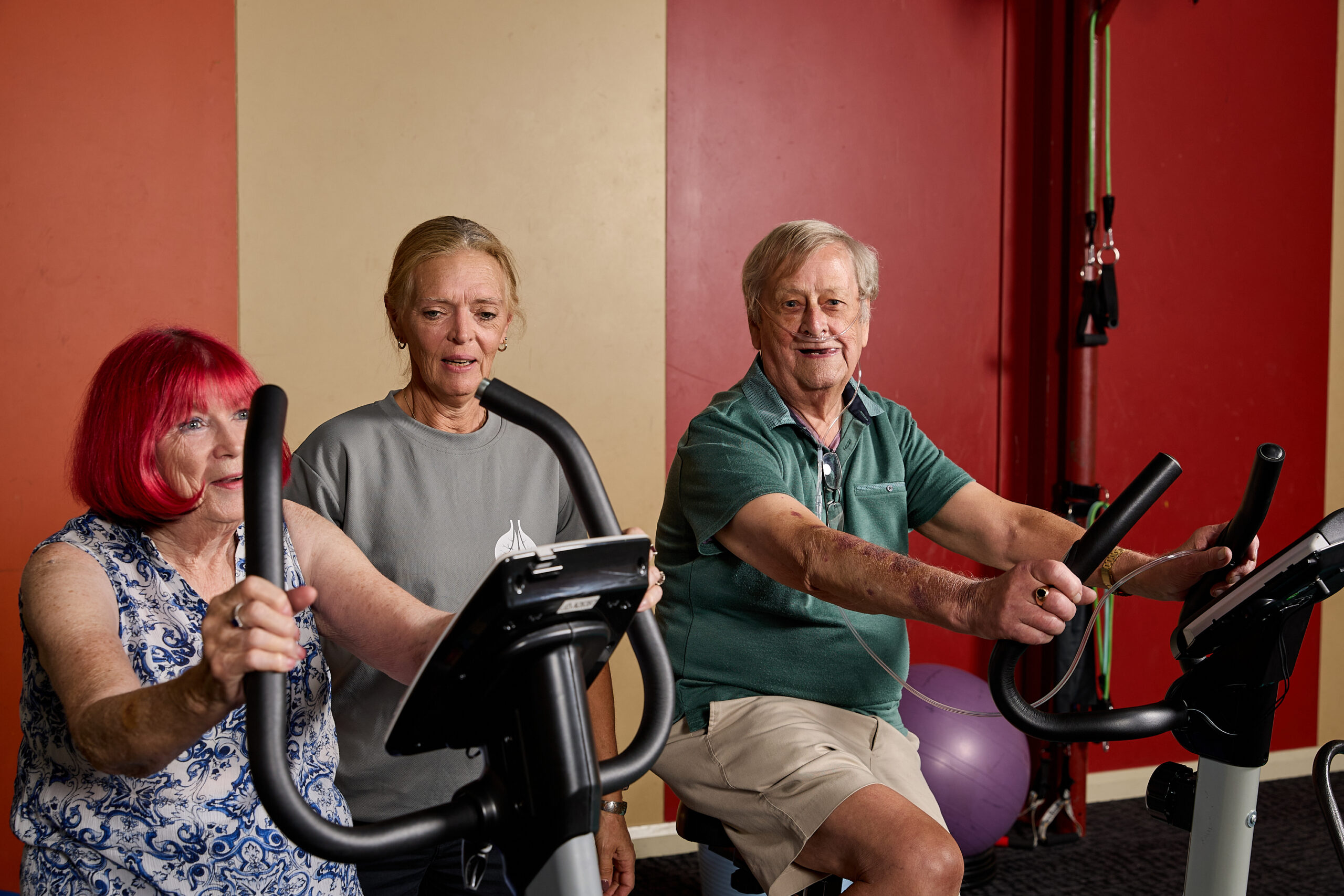
The use of the dyspnoea score can help patients equate the level of exercise that they perform during the supervised exercise program to the level of exercise that they have been asked to perform during their home exercise program. If they maintain a similar level of dyspnoea, they should be exercising at a similar intensity.
C. Prescribing exercise intensity for cycling based on 6MWT
The recommended intensity when prescribing cycle ergometry training is at least 60% of the peak work rate achieved on an incremental symptom limited cycle ergometry test. However, clinically many patients do not undergo a cycle ergometry test.
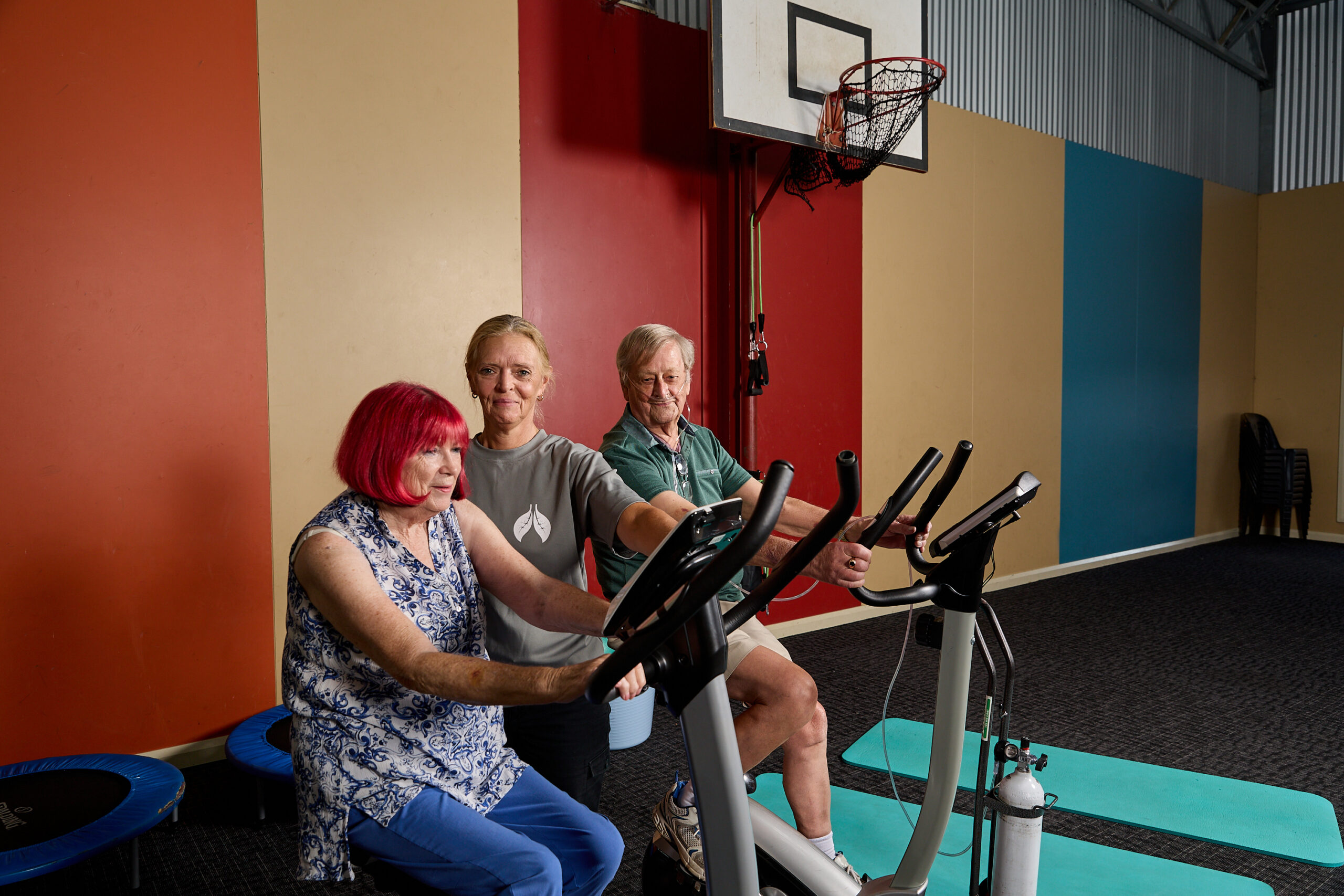
The recommended intensity when prescribing cycle ergometry training is at least 60% of the peak work rate achieved on an incremental symptom-limited cycle ergometry test. However, clinically many patients do not undergo a cycle ergometry test.
Several published equations are available to estimate the initial work rate for prescribing cycle ergometry training based on the performance of a patient with COPD on the 6MWT. These equations have not been prospectively validated and their utility in the clinical setting has not yet been tested.9 An example is provided below to calculate cycle training intensity from the 6MWT.
Based on the 6MWT the following equation will give an estimate of the patient s peak work rate9.
Peak work rate (Watts)= (0.122 x 6MWD) +(72.683 x Ht [m]) – 117.109
Calculate 60% of this value as a starting intensity for cycle training. As this is only an estimated intensity, titrate the work rate so that the patient s dyspnoea or rate of perceived exertion score is 3-4 on the Borg 0-10 scale. This should equate to exercising at about 78% of VO2 peak8
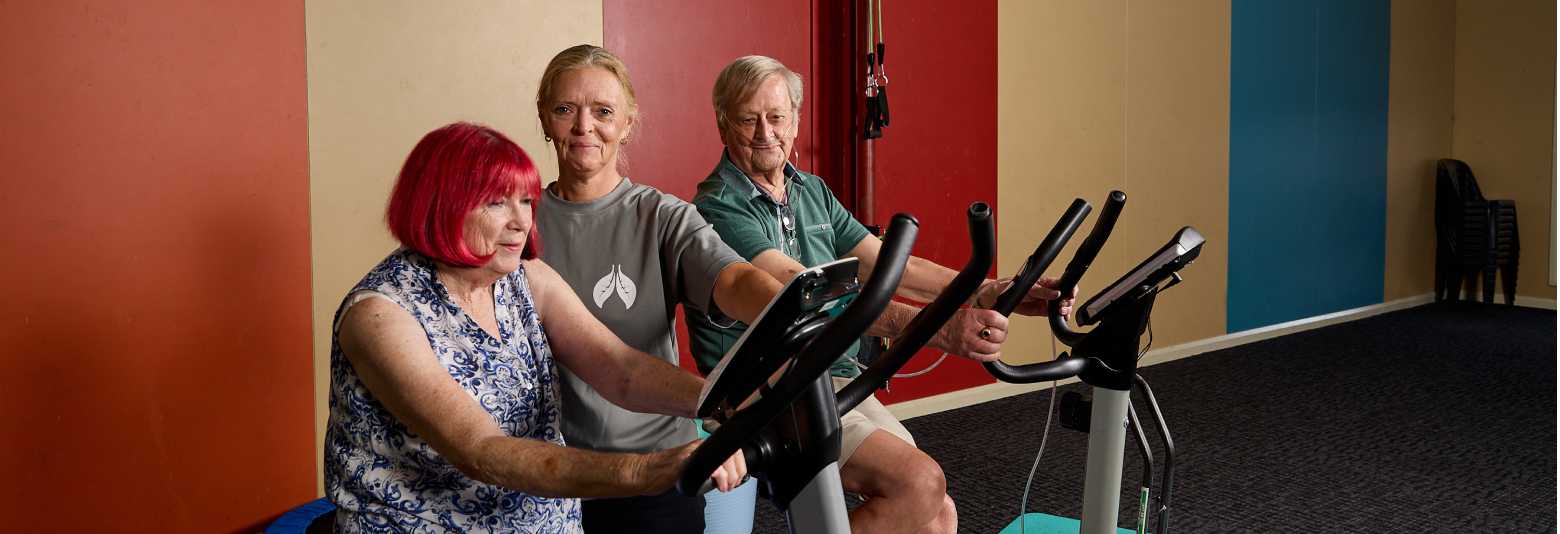
- The recommended duration for a lower limb endurance exercise session is 30 minutes (e.g. 30 minutes of walking and/or cycling).
- If a patient is very deconditioned the duration of the initial exercise sessions can be shortened (e.g. to 10 minutes with short rests if required). The duration should be built up towards 30 minutes in duration during the first two weeks of the program.
- If a stationary cycle is available, the program can be split into 15 minutes of cycling and 15 minutes of walking.
The frequency of lower limb endurance exercise training should be:
- Supervised exercise training: Three times per week.
- Additional home exercises: : A further one or two times per week to achieve 4-5 sessions per week. An additional home exercise program also assists with ensuring exercise is integrated into daily home life.
However, many centres cannot provide supervised sessions three times per week. If this is the case, the frequency of training should be:
- Supervised exercise training: Two times per week.
- Home exercise training: Two or three times per week.
Continuous or Interval Training
- Exercise may be continuous or completed in an interval format.
- Continuous training is exercise at a prescribed intensity for the duration of the exercise period.
- Interval training is brief periods of high intensity exercise alternated with short periods of recovery (either rest or low intensity exercise). The total duration of exercise at the desired intensity still needs to be completed, therefore the duration of the exercise session will be longer (accounting for rests) than if the exercise was performed continuously.
- Interval training may be more suitable for patients who cannot sustain the prescribed intensity for the required duration of continuous exercise (i.e. due to severe dyspnoea, marked oxygen desaturation during exercise, signs of significant fatigue or presence of symptoms from co-morbid conditions, eg claudication pain). Interval training attenuates the fall in SpO2 typically seen with continuous exercise. People with ILD and COPD often prefer interval exercise training. (ref39 40 41)
Intermittent training may be needed in patients with severe disease or those who are very deconditioned. Intermittent training is short duration continuous exercise (e.g 5 minutes) followed by a rest and repeated to build the prescribed duration.

Circuit Training
- Circuit training typically consists of multiple exercises completed for short durations, e.g. 3-5 minutes.
- Circuit training should not replace lower limb endurance training unless there are stations within the circuit that replicate endurance training (e.g. 15 minutes of cycling and 15 minutes of walking at appropriately high intensities).
- At present, there are no randomised controlled trials evaluating the effectiveness of circuit
training in patients with COPD.
Circuit training typically consists of multiple exercises completed for short durations, e.g. 3-5 minutes.
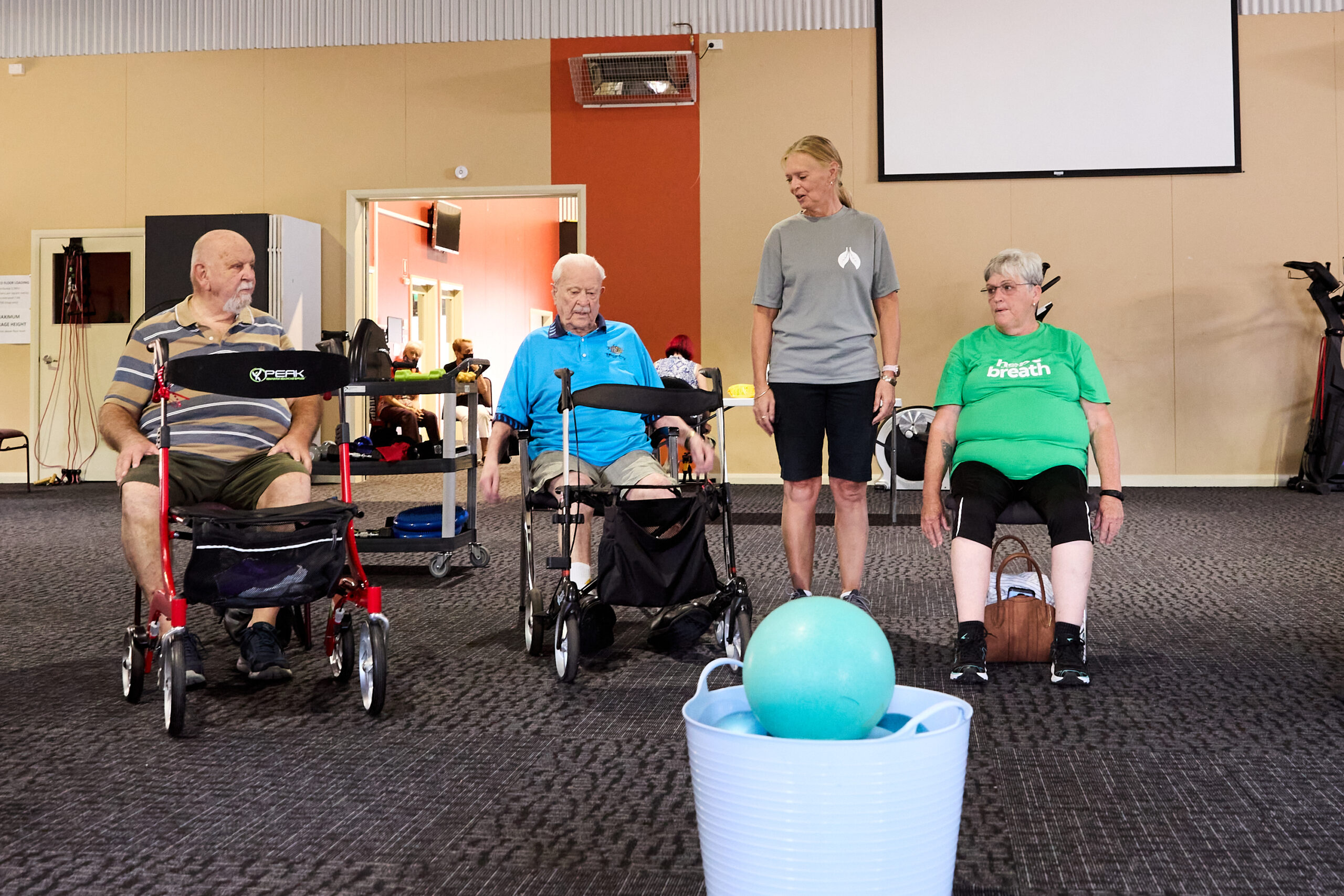
Warm-up and Cool-down
Warm-up and cool-down exercises can be included in exercise training sessions.
Flexibility, stretching and balance exercises can be included as part of the warm-up and cool-down section of each exercise session.

